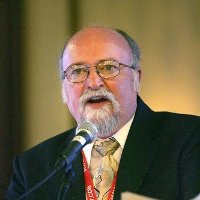
Dr. James (Jim) Komiak will be presenting the keynote for the amplifier track at the EDI CON USA conference, taking place 20-22 September in Boston. Jim is an Engineering/Scientific Fellow at BAE Systems in Nashua, New Hampshire, and an IEEE Fellow, both recognizing his technical expertise in power amplifiers, MMICs, and T/R modules.
By email, we caught up with Jim to learn more about his background and perspective on the state of power amplifier design.
Q: What led you to pursue engineering as a career? Was RF/microwave serendipity or your intention?
I was always interested in how things worked. My father was a physics professor at a Chicago City College. He encouraged me with building a crystal radio, Heathkits, computer programming — punched tape and Teletype remote terminal!!! So I chose electrical engineering at Cornell University. As a Ph.D. candidate, I specialized in circuit theory. RF/microwave problems were the hardest, so you had to address those as the ultimate test.
Q: You have many years experience designing power amplifiers. Do you feel like you’ve mapped the ground or are there still new continents to explore?
About 36 years. My first PA design was a 1 W, L-Band LO distribution amp using a packaged Class C Si BJT. In 1980. Better devices, improved characterization and modeling, CAD advances mean there will always be new benchmarks in PAs.
Q: Design methodologies and CAD tools have really advanced since the nascent days of GaAs MMICs. Yet despite the improvements, do you find that some aspects of the design process remain challenging or frustrating? What are they?
It is still an art that requires experience. CAD has improved, but there is no integrated solution for measurement–extraction–modeling–synthesis–analysis–optimization–stability–EM–layout–repeat as necessary.
For example, unless you verify them yourself, models are not verified by comparison to measurement of physical structures. Some stability analysis techniques you have to program yourself, like Struble-Platzker NDF or parametric. There is no single text book that I consider the reference for PA design, although the Steve Cripps book comes close.
Q: You have been very involved in the MTT-S student paper and design competitions, so have a good vantage point to see “young” engineers entering the field. What one or two recommendations do you give them to be successful?
Life-long learning. Sometimes you need to pursue this on your own initiative.
Q: Do you see any disruptions in semiconductor technology on the horizon that will change the RF/microwave industry?
Devices will be evolutionary. Funding for basic research is sparse, big corporate laboratories have disappeared, government laboratories have been downsized.
Diamond has theoretical potential, but no one knows how to dope it and etch it. Graphene and carbon nanotube don’t have the purity and frequency response. NRL thinks boron nitride has potential, and I read a recent paper from Japan that was optimistic about gallium oxide.
The advances will be the emergence of millimeter wave and sub-millimeter wave applications, multi-tone systems with controlled distortion, STAR (simultaneous transmit and receive), thermal management.
Q: When you’re not designing MMICs, what do you do for fun?
For 19 years, I have been taking my Porsches (currently a 2002 996) and my 2003 BMW M3 to club track days. Also, I am not very good, but I enjoy playing my Rick 12-string and Fender “Fat” Strat guitars with a Marshall stack, but my wife threatens to send me and this stuff to the detached garage.
